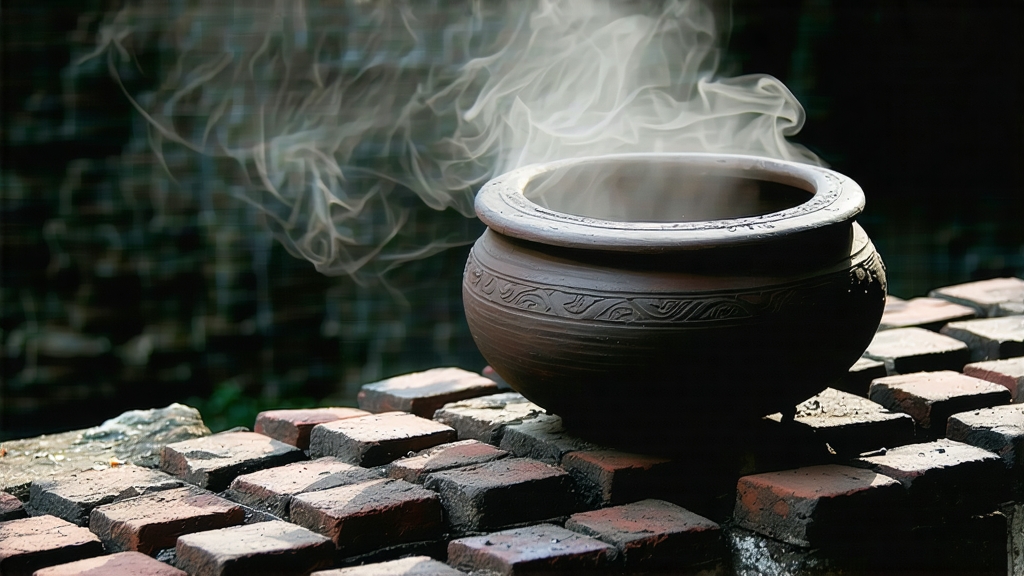
Tucked into the humid, karst-pitted mountains of southern China’s Guangxi Zhuang Autonomous Region, Liupao (literally “Six Forts”) tea is the quietest celebrity of the dark-tea family. While Pu-erh commands auction headlines and Fu-brick dazzles with its golden “flowers,” Liupao has spent four centuries perfecting the art of understatement, developing a flavor that Chinese connoisseurs liken to “betel nut wrapped in camphor silk.” For international drinkers who think they know fermented tea, Liupao offers a parallel universe of taste, history, and craft.
Historical roots
The name first appears in the Qing-era Guangxi provincial gazetteer of 1680, which records “Liu Bao” as the transit port where tea from six surrounding forts (liu bao) was compressed into bamboo baskets, rafted down the Xun River, and traded through Guangzhou to Hong Kong and, eventually, Southeast Asia. Dockworkers noticed that the tea improved after weeks in the hold of junks, where bilge water and river mist soaked the bamboo skins. By the late 19th century, Liupao had become the breakfast drink of tin-mine coolies in Kuala Lumpur; its brisk, mineral character cut through the cloying humidity and oily noodle soups. In 1886 the British colonial government listed “Liu-Po” among taxable imports in the Straits Settlements, a rare honor for a Chinese tea that was neither black nor green.
Micro-terroirs within one county
Modern Liupao is protected under China’s geographical-indication system, limited to the counties of Cangwu, Tengxian, and a sliver of Zhaoping. Within this triangle, altitude ranges from 80 m along the river to 1,200 m on the cloud-capped ridges. Gardeners speak of three micro-zones: “river flat,” “saddle slope,” and “cloud line.” River-flat leaf gives cocoa thickness; saddle-slope adds orchid fragrance; cloud line contributes the cooling camphor note that lingers in the throat. Only the indigenous Da Ye cultivar (Camellia sinensis var. sinensis cv. Guangxi Da Ye) is legal for GI Liupao. Its leaves can span 18 cm—broad enough to serve as impromptu umbrellas during sudden subtropical downpours, yet tender enough to wither evenly in the shade.
From pluck to pile: the craft
Harvest runs from Qingming to Grain Rain, when two leaves and a bud still wear their spring down. After a brief solar withering, the leaves are pan-fired at 280 °C for eight minutes—longer than green tea, shorter than Yunnan sun-dried maocha. The critical twist comes next: while still warm, the leaf is rolled under bamboo mats weighted with river stones. The pressure bruises cell walls just enough to release polyphenol oxidase without rupturing the cuticle, a nuance that later encourages anaerobic fermentation. After overnight oxidation, the leaf is dried over pine-scented charcoal, acquiring a whisper of smoke that will act as a natural preservative during decades of aging.
The signature “wet piling” (wo dui) begins in late June, when the monsoon lifts ambient humidity above 85 %. Workers build 1,200 kg heaps inside bamboo-lined chambers. Temperature probes are inserted every 20 cm; when the core hits 58 °C, the pile is turned by hand—exactly 180 degrees—to oxygenate the center. Over 25 days the leaf darkens from moss green to the color of antique mahogany, while microbial consortia dominated by Aspergillus niger, Blastobotrys adeninivorans, and a local yeast Kodamaea ohmeri generate the methyl salicylate responsible for Liupao’s medicinal coolness. Unlike Pu-erh, no water is added; the process relies solely on atmospheric moisture, giving Guangxi’s climate co-author status in the recipe.
Basket aging: tea that breathes
After piling, the leaf is steamed for seven seconds, just enough to soften, then packed into 40 kg bamboo husks woven in the “dragon-scale” pattern. The baskets are stacked in riverside caves whose year-round temperature hovers at 24 °C and relative humidity at 80 %. Here the tea “walks” for a minimum of three years, during which the bamboo’s lactones seep inward, marrying with the leaf’s own esters to create the signature betel-nut note. Masters claim the ideal aging curve peaks at